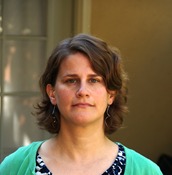Program Information
Measurement of Dose Enhancement Due to Backscatter From Modern Dental Materials
M Hurwitz1*, T Tso2 , S Lee2 , E Rosen2 , D Margalit1 , C Williams1 , (1) Brigham and Women's Hospital / Harvard Medical School, Boston, MA, (2) Harvard School of Dental Medicine, Boston, MA
Presentations
SU-F-T-426 (Sunday, July 31, 2016) 3:00 PM - 6:00 PM Room: Exhibit Hall
Purpose: High-density materials used in dental restoration can cause significant localized dose enhancement due to electron backscatter in head-and-neck radiotherapy, increasing the risk of mucositis. The materials used in prosthetic dentistry have evolved in the last decades from metal alloys to ceramics. We aim to determine the dose enhancement caused by backscatter from currently-used dental materials.
Methods: Measurements were performed for three different dental materials: lithium disilicate (Li₂Si₂O₅), zirconium dioxide (ZrO₂), and gold alloy. Small thin squares (2x2x0.15 cm³) of the material were fabricated, and placed into a phantom composed of tissue-equivalent material. The phantom was irradiated with a single 6 MV photon field. A thin-window parallel-plate ion chamber was used to measure the dose at varying distances from the proximal interface between the material and the plastic.
Results: The dose enhancement at the interface between the high-density and tissue-equivalent materials, relative to a homogeneous phantom, was 54% for the gold alloy, 31% for ZrO₂, and 9% for Li₂Si₂O₅. This enhancement decreased rapidly with distance from the interface, falling to 11%, 5%, and 0.5%, respectively, 2 mm from the interface. Comparisons with the modeling of this effect in treatment planning systems are performed.
Conclusion: While dose enhancement due to dental restoration is smaller with ceramic materials than with metal alloys, it can still be significant. A spacer of about 2-3 mm would be effective in reducing this enhancement, even for metal alloys.
Contact Email:

